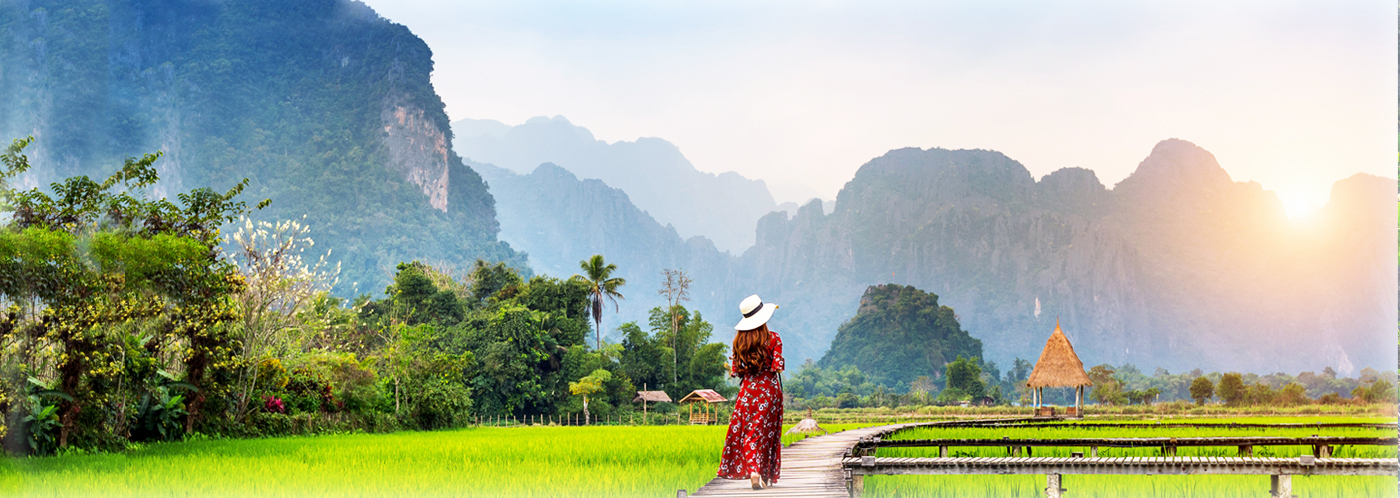Chau Doc Floating Village: A Ribbon of Colors on the Waters of An Giang
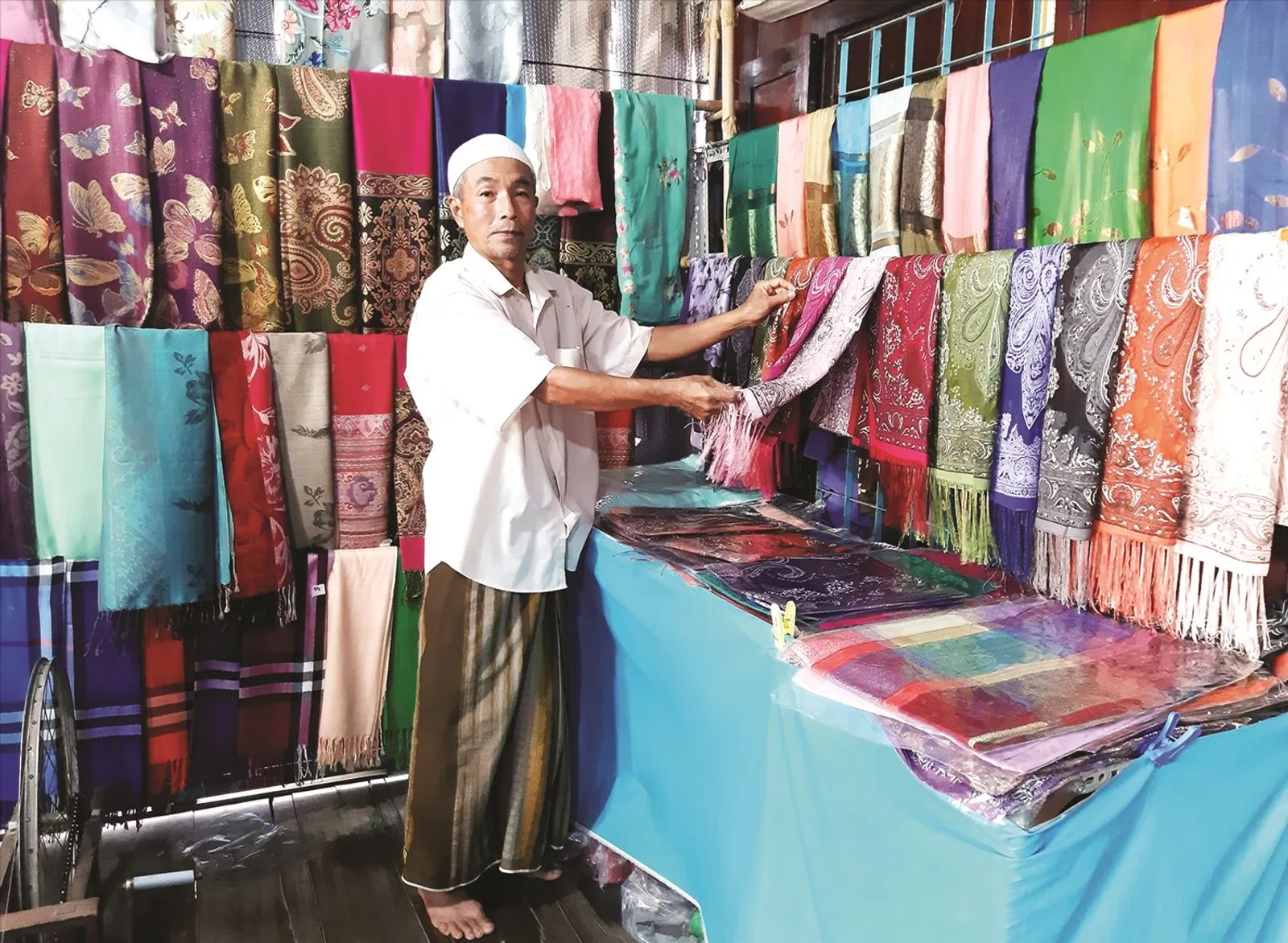
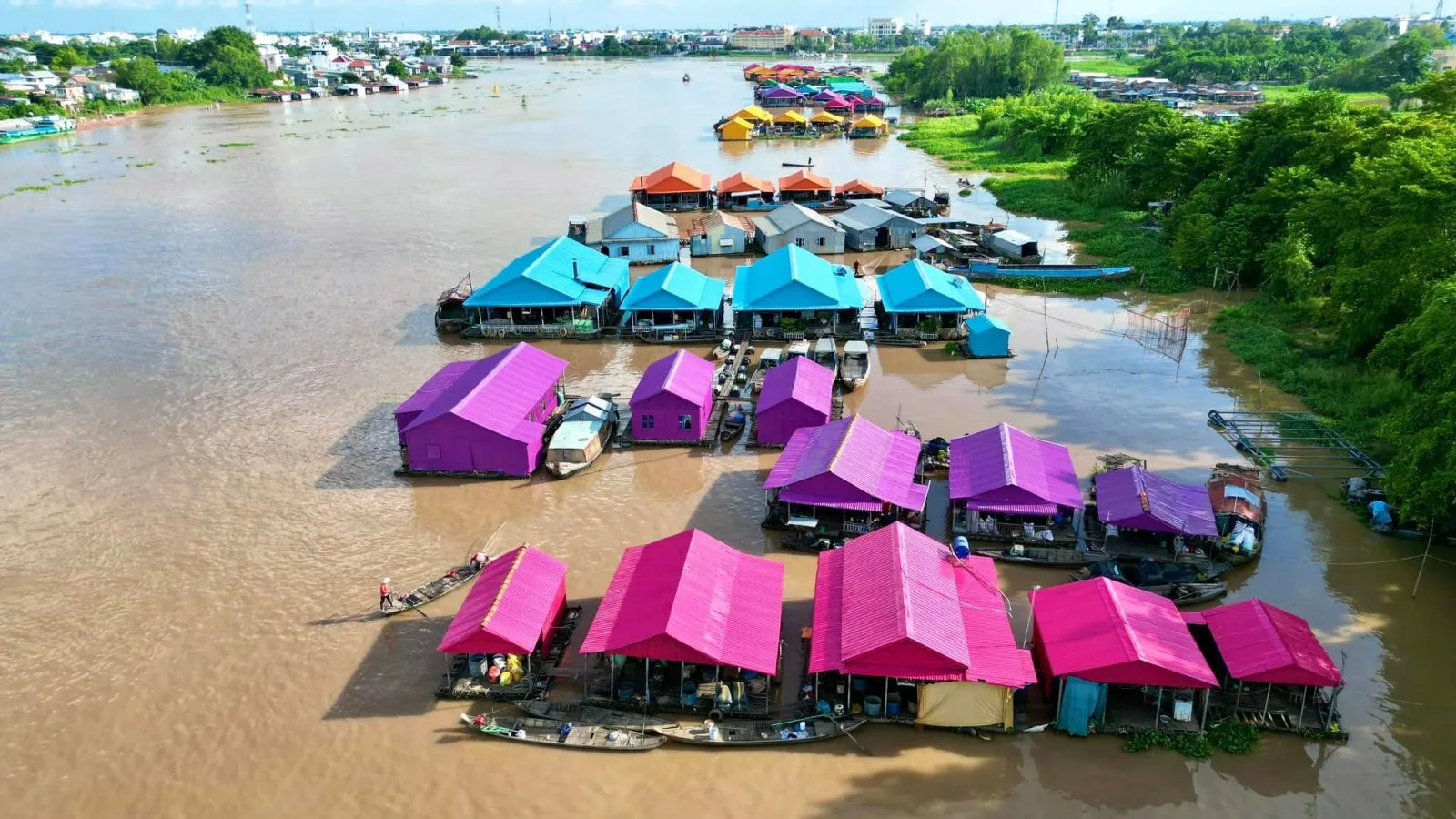
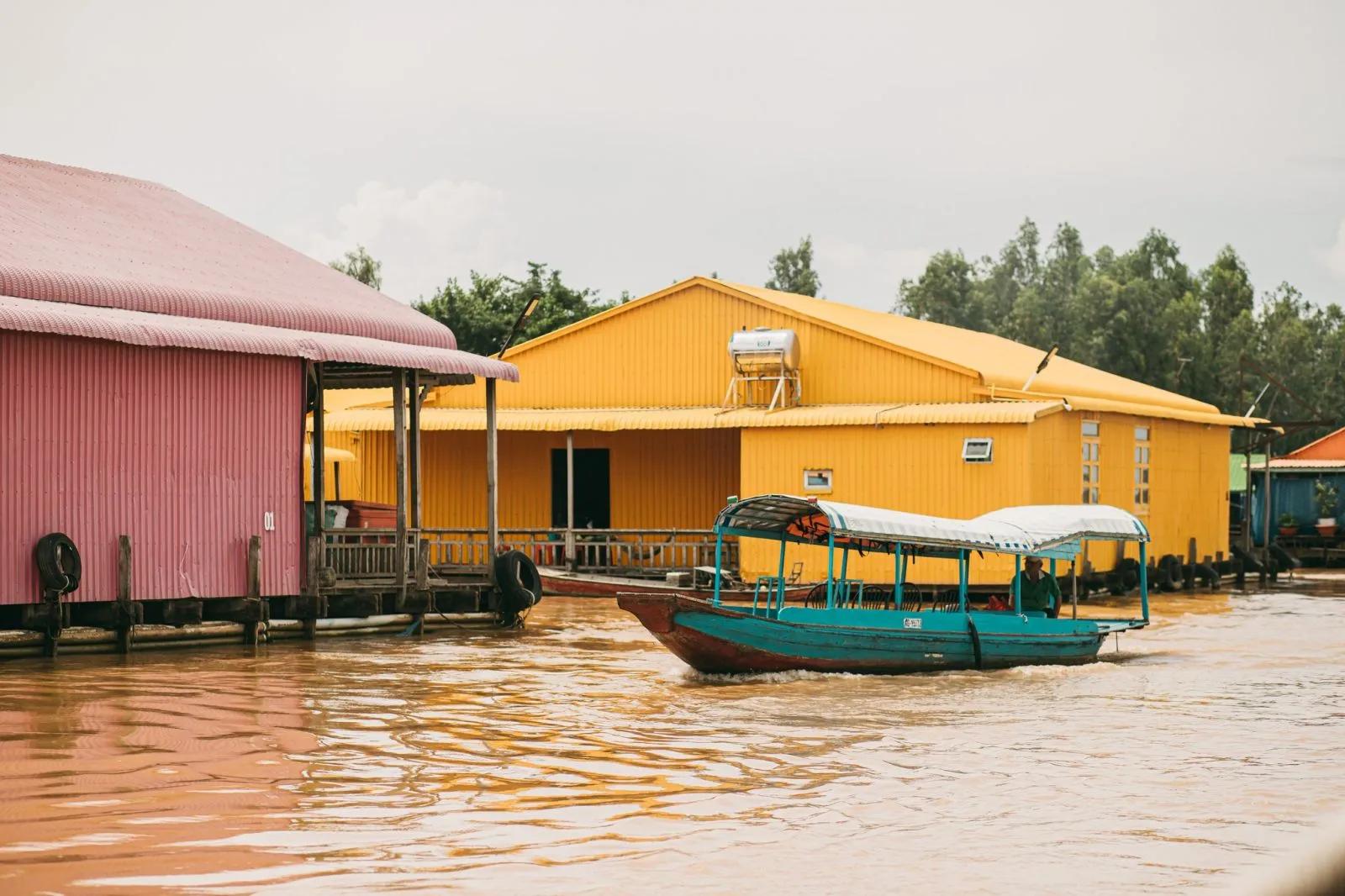
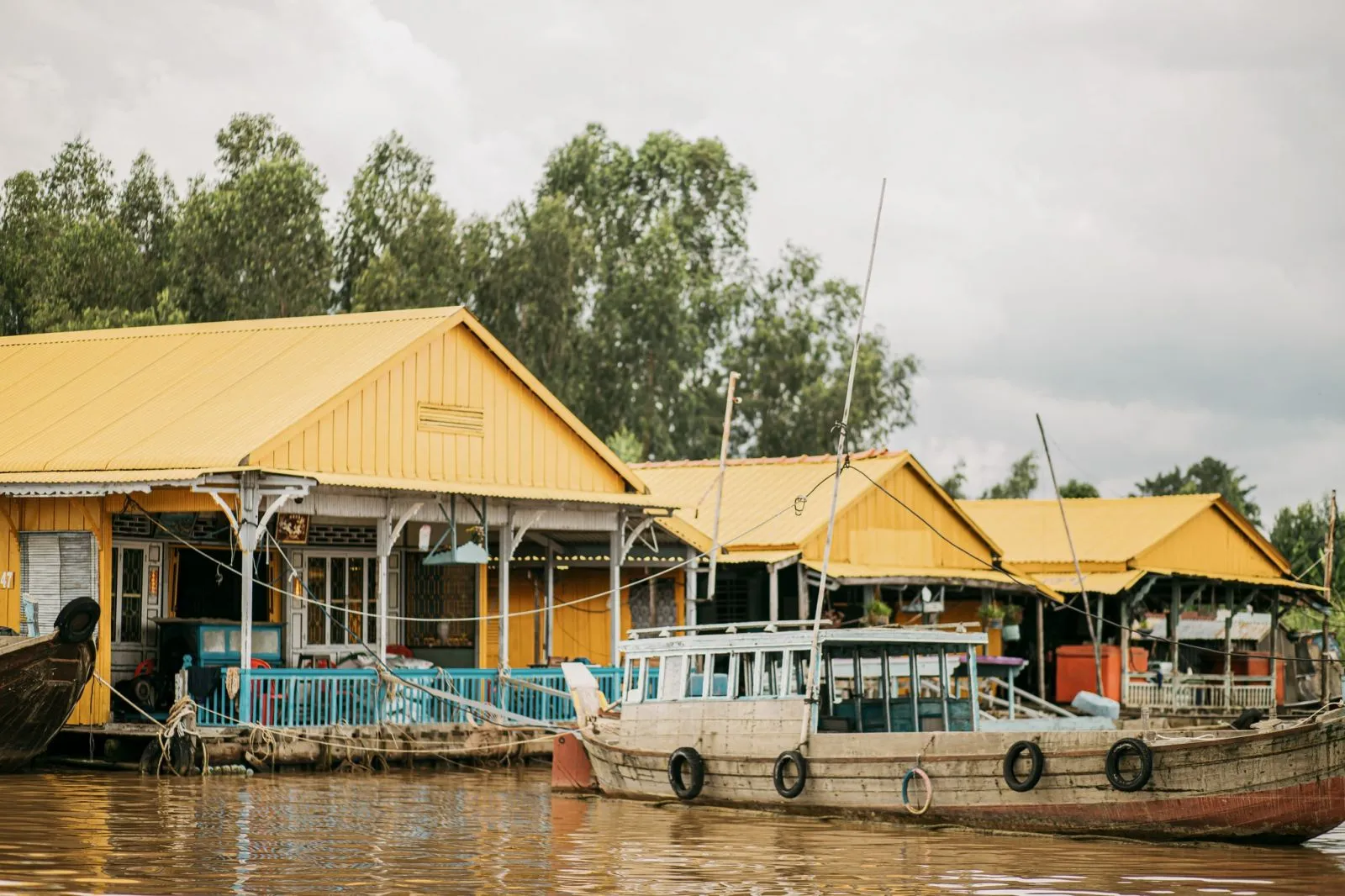
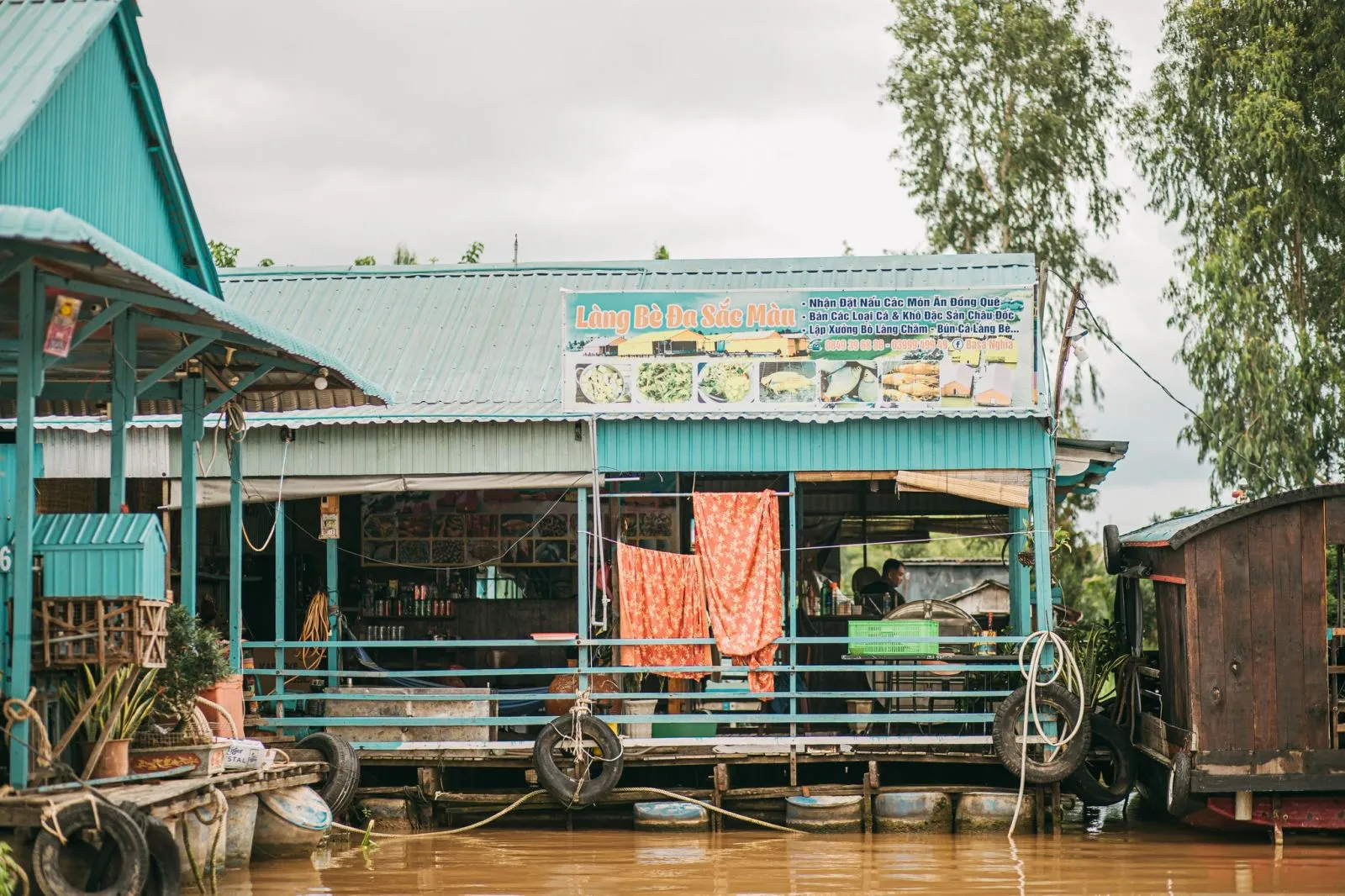
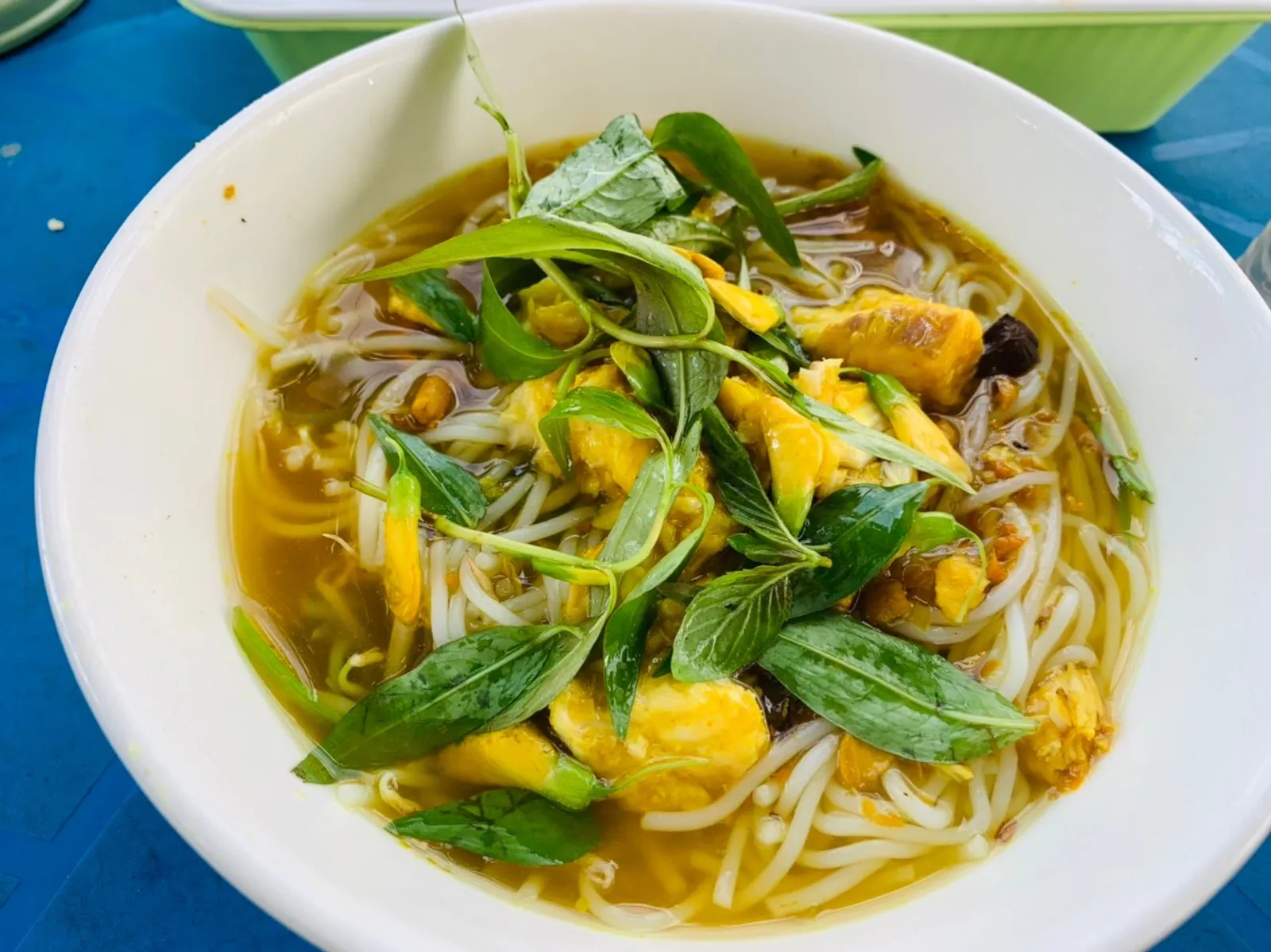
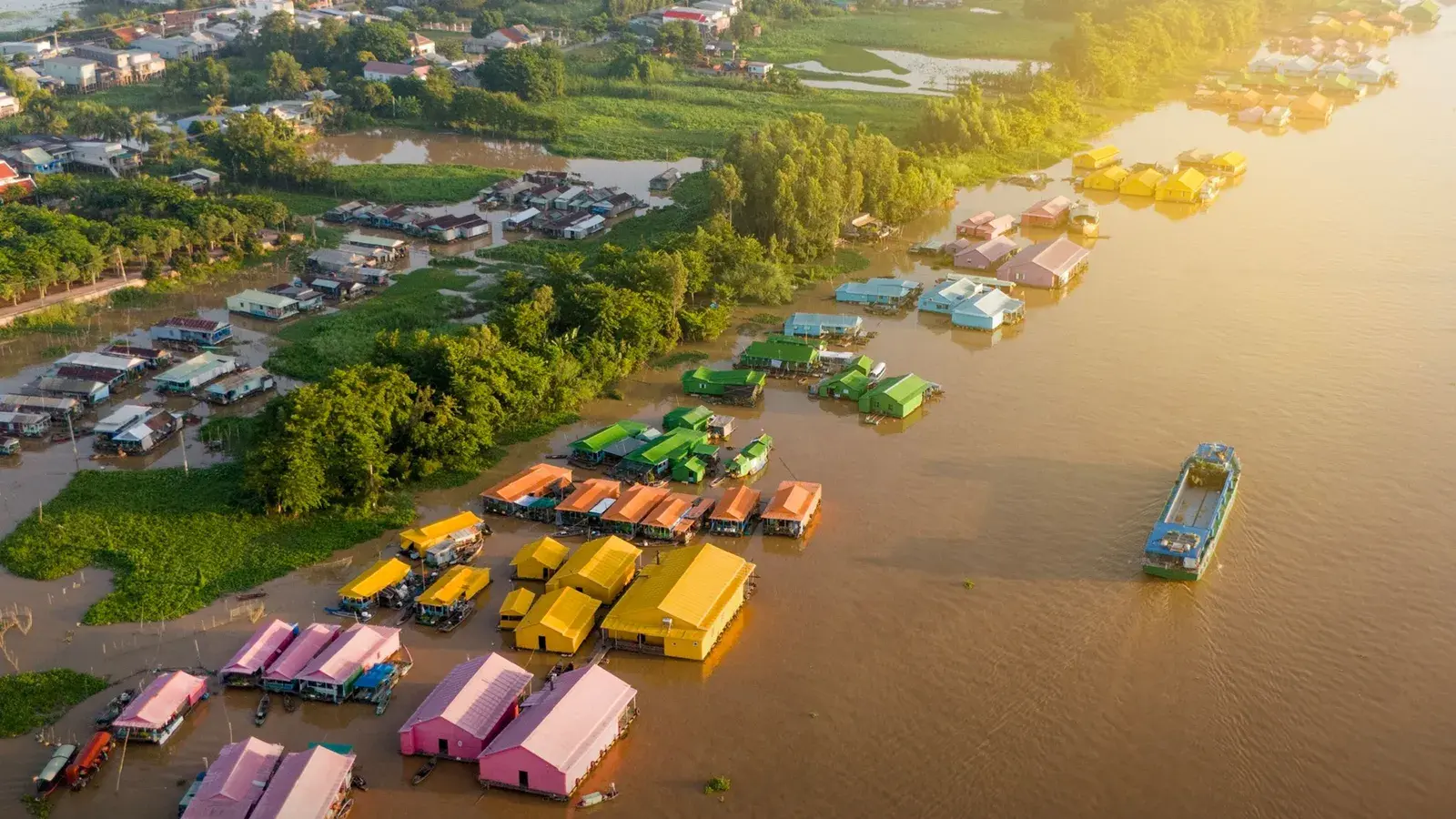
At the meeting point of the Chau Doc River in Da Phuoc Town, An Phu District, An Giang Province, lies a remarkable sight. Hundreds of floating houses stretch along a one-kilometer waterway, forming a vivid ribbon of color across the Hau River. This is the Chau Doc Floating Village, home to generations of families who have long relied on traditional freshwater fish farming as their livelihood.
Thanks to a creative initiative by local authorities, the floating village has been transformed with vibrant hues, turning it into one of the region’s most photogenic and culturally rich destinations. Beyond its colorful charm, the village offers a glimpse into the daily rhythms and enduring resilience of life along the Mekong Delta’s waterways.
The History of the Floating Village
The origins of Chau Doc Floating Village date back to the 1960s, when only a few modest floating homes dotted the river, and fish were raised naturally in the clean waters. A decade later, as aquaculture proved highly profitable, more settlers arrived, and the village quickly became an important economic hub of An Giang.
Between 1990 and 2005, the village reached its golden era. More than 20,000 households lived on the water, producing an average of 2,000 tons of fish per year. Basa and tra catfish were the main exports, shipped to markets in North America and Western Europe.
However, challenges soon followed. Climate change and pollution in the Mekong River led to reduced harvests, forcing many families to shift to farming different fish species such as carp, featherback, and silver pompano. Gradually, the local economy recovered, and the floating village regained its vitality.
A Distinctive Way of Life
Architecturally, the floating homes share a harmonious look. Most are built from waterproof wood combined with metal sheets, and some have patterned vinyl ceilings. The fish cages are made from ironwood, extending about five meters deep and reinforced with stainless steel nets. Many homes are spacious, reaching up to 100 square meters, and feature kitchens, living rooms, bathrooms, and even ornamental plants.
Though some families have moved away, many remain devoted to their ancestral craft. Today, freshwater fish farming is not only their means of survival but also a symbol of the region’s cultural heritage.
A New Look for a Traditional Village
In 2023, the An Giang Center for Trade and Investment Promotion launched a colorful revitalization project. A total of 165 floating houses between the Chau Doc River junction and the nearby Cham villages were painted in bright shades of red, yellow, orange, green, blue, and violet. The goal was to boost tourism and improve the livelihoods of local residents.
From above, the transformed village resembles a work of art gliding across the river’s surface. The vivid scenery has turned Chau Doc Floating Village into one of the Mekong Delta’s most distinctive water routes. As night falls and the lights reflect on the river, the floating homes exude a serene and romantic beauty.
Daily Life on the River
The village is at its liveliest during the flood season, from August to November in the lunar calendar, when the Hau River overflows with nutrient-rich waters. Visitors can observe the locals feeding fish, learn about aquaculture methods, and even try their hand at tossing feed into the cages while fish dart to the surface in a flurry.
Beyond aquaculture, travelers can experience the daily life of the villagers and understand why they choose to live on the water. For many, life afloat offers freedom from the financial burdens of land ownership. Instead, they embrace a simpler existence, in harmony with nature, welcoming visitors into their floating “island community.”
Boats and small canoes are the main modes of transport. You might see fishing boats, cargo vessels, and vendors selling palm-sugar cakes or fresh produce. In the evenings, families unwind after a long day, women prepare dinner while men repair fishing nets or engines, and traditional Mekong melodies echo softly over the water.
Culinary Delights and Cultural Connections
Visitors to the floating village can enjoy the region’s most iconic dishes. The deep-fried basa fish cake, fermented fish, and hotpot made with bông lau fish are local favorites. Yet the highlight is Chau Doc fish noodle soup, known for its fragrant turmeric broth, firm rice noodles, and an array of toppings including roasted pork, banana blossoms, and herbs. Its rich, comforting flavor captures the essence of the Mekong Delta.
To complete the journey, visitors can cross to the Cham villages of Chau Phong and Chau Giang on the opposite banks of the Hau River. These communities offer insights into Cham Muslim traditions, with elegant mosques and colorful handwoven textiles. Travelers can also bring home souvenirs such as woven cloth, bamboo fishing tools, or dried local fish.
A Community Treasure
The colorful floating village of Chau Doc is more than a scenic attraction. It reflects the harmony between tradition and innovation and stands as a model for community-based tourism in Vietnam. With its picturesque charm, rich history, and cultural authenticity, it promises to become a hidden gem that enchants both domestic and international travelers.
Recent Post
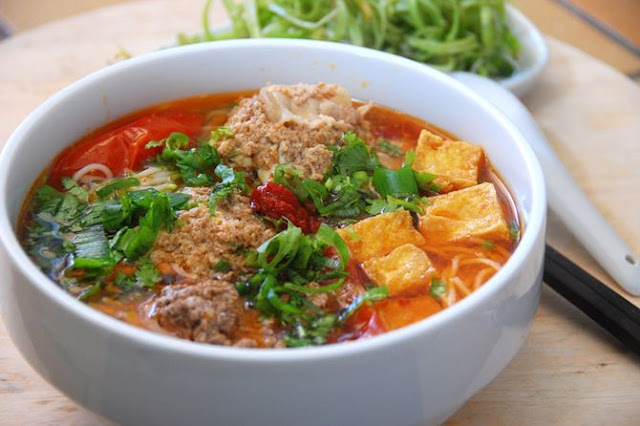
Nha Trang Crab Vermicelli: A Coastal Twist on a Northern Classic
Among Vietnam&rsqu...
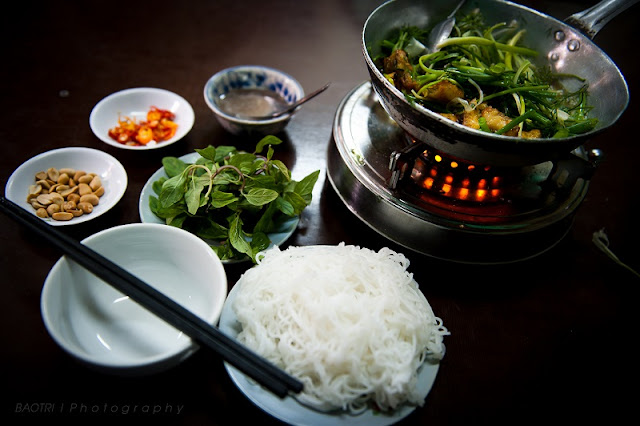
Cha Ca La Vong: The Iconic Hanoi Turmeric Fish with Dill
Among the many bel...

Son Doong Cave - Vietnam’s Emerging Natural Wonder and Tourism Magnet
Located in the cen...

Trang An Scenic Landscape Complex - The “Ha Long Bay on Land” of Ninh Binh
Recognized by UNES...
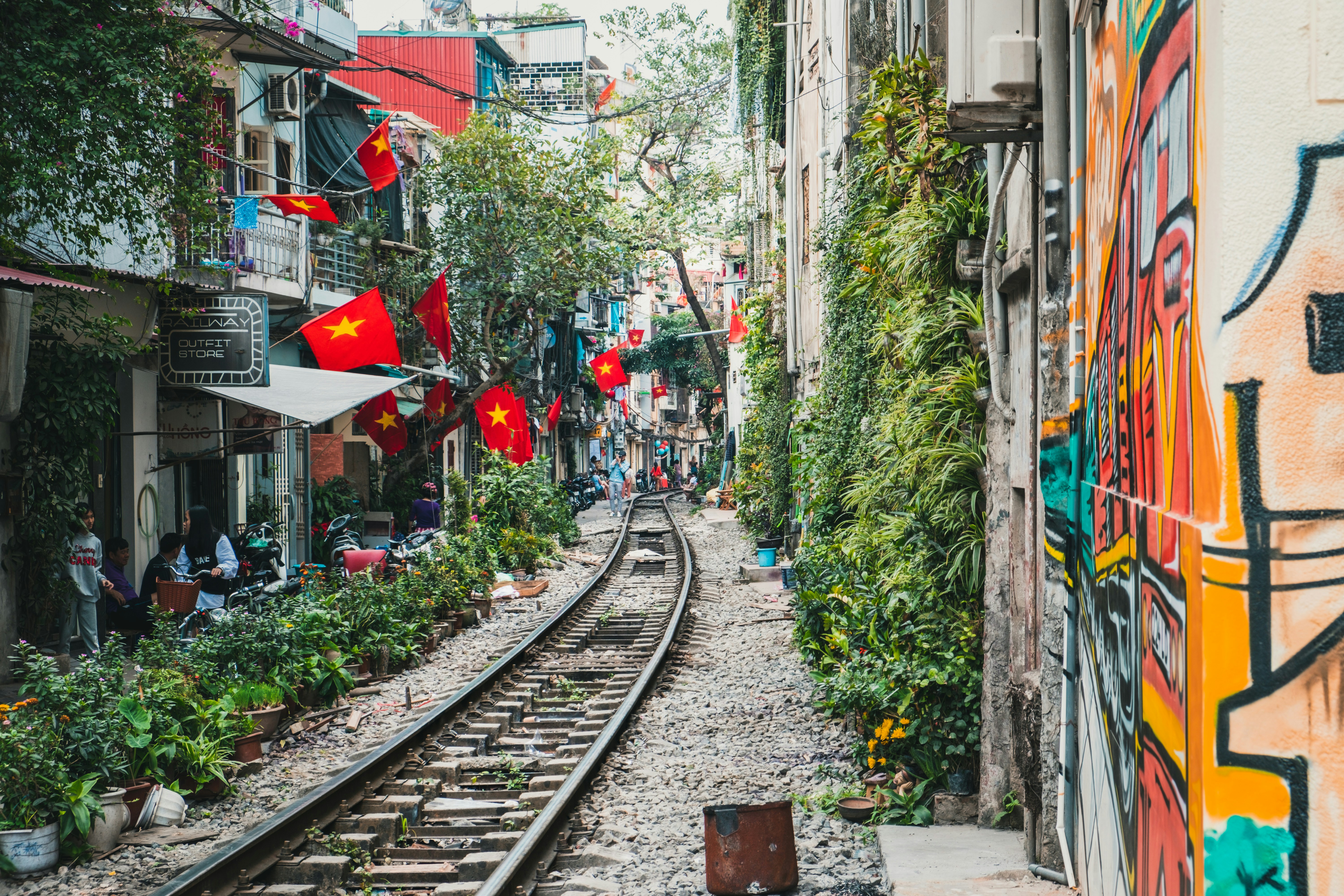
Hanoi Ranks Second Among Asia’s Top Honeymoon Destinations
Hanoi, the capital...

10 Smart Ways to Travel Better While Saving More
Today’s trav...

